AUDIT & ASSURANCE
Adapting to a constantly evolving regulatory landscape and the rapid advancements in technology is essential for businesses today. Recent developments in the realms of law and technology have significantly transformed the audit environment.
Leveraging deep insights into region-specific risks, we deliver customized audit and assurance solutions spanning various business domains, propelling your company’s operational excellence.
Our Key Audit & Assurance Services
Statutory Audit
Ensuring regulatory compliance through thorough financial scrutiny.
Audit Readiness
Preparing for audits to meet regulatory requirements.
Audit Remediation
Addressing and resolving audit findings for compliance improvement.

Appointment of Auditors
Initiate the audit process by selecting qualified auditors with the expertise necessary to assess your financial operations.
Audit Planning
Establish a well-structured audit plan outlining the scope, objectives, and methodologies to be employed during the audit.
Risk Assessment and Internal Control Evaluation
Identify potential risks and evaluate the effectiveness of internal controls in place to mitigate these risks.
Audit Procedures and Evidence Gathering
Implement systematic audit procedures and gather relevant evidence to substantiate findings and conclusions.
Financial Statement Review
Thoroughly scrutinize financial statements to verify their accuracy, completeness, and compliance with accounting standards.
Compliance with Applicable Laws and Regulations
Ensure that your financial operations adhere to all relevant laws, regulations, and industry standards.
Audit Opinion
Formulate a clear and objective audit opinion based on the audit findings and their implications for your financial status.
Audit Reporting
Compile a comprehensive audit report summarizing findings, conclusions, and recommendations for improvements.
Communication with Management and Governance Bodies
Maintain open and effective communication with company management and governance bodies throughout the audit process.
Compliance Monitoring and Continuous Improvement
After the audit, establish mechanisms for ongoing compliance monitoring and embrace a culture of continuous improvement to enhance your financial operations. and governance bodies throughout the audit process.
Audit readiness refers to the state of being prepared and organized for an upcoming audit. It involves ensuring that the necessary documentation, records, and processes are in place to facilitate a smooth and efficient audit.

Understand the Audit Requirements
Begin by thoroughly grasping the specific audit requirements, ensuring clarity on what's expected during the audit process.
Establish Internal Controls
Implement robust internal controls to safeguard financial integrity and ensure adherence to audit standards.
Maintain Proper Documentation
Maintain meticulous records and documentation, providing a clear trail of financial transactions and processes.
Reconcile Accounts
Regularly reconcile financial accounts to verify accuracy and identify discrepancies that may need attention.
Review Financial Statements
Conduct a comprehensive review of financial statements to validate their accuracy and compliance with accounting principles.
Assess Compliance
Evaluate your organization's compliance with relevant regulations, industry standards, and internal policies.
Prepare Supporting Schedules and Analysis
Compile supporting schedules and in-depth analysis to substantiate the figures and assertions in your financial statements.
Address Previous Audit Findings
Address any unresolved issues or findings from previous audits to demonstrate a commitment to continuous improvement.
Coordinate with Auditors
Maintain open channels of communication with auditors, ensuring they have access to the information and resources they require.
Conduct Internal Audit or Mock Audit
Proactively assess your financial processes through internal audits or mock audits to identify and rectify potential issues before the formal audit.
Audit remediation refers to the process of addressing and resolving issues identified during an audit. When audit findings or recommendations are made, organizations must take appropriate actions to correct deficiencies, improve controls, and ensure compliance with applicable standards and regulations.

Navigating the intricacies of audit remediation requires a clear plan of action. Here, we outline the essential steps to guide you through this process effectively.
Review Audit Findings
Begin by meticulously examining the audit results to identify compliance gaps and discrepancies within your financial operations.
Prioritize Remediation Actions
Evaluate the audit findings to determine their significance and prioritize the actions needed to address the most critical issues first.
Develop Action Plan
Create a structured plan outlining the specific steps and strategies required to remedy each audit finding effectively.
Allocate Resources
Ensure you have the necessary personnel, budget, and tools in place to execute the remediation plan efficiently.
Implement Corrective Actions
Put your action plan into motion, making necessary changes to internal processes and controls to rectify identified issues.
Monitor Progress
Continuously track and assess your progress to confirm that remediation efforts are on track and yielding desired results.
Document Changes
Thoroughly document all changes made during the remediation process to maintain a clear record of compliance improvements.
Test Effectiveness
Validate the effectiveness of corrective actions through testing and verification processes to ensure sustainable compliance.
Communicate Progress
Keep stakeholders informed by providing regular updates on the progress of the audit remediation efforts.
Continuous Improvement
Embrace a culture of ongoing enhancement, using audit remediation as an opportunity to continually improve your financial compliance and operations.
Connect with Us!
Connect with us, locate an office closest to you, or join our team.

